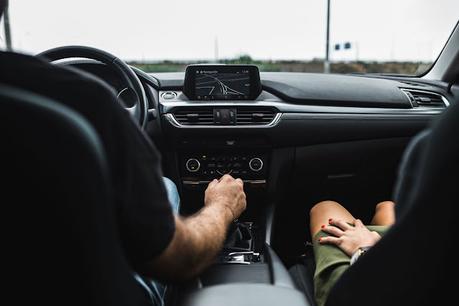
The idea of taking a long road trip in an electric car would have seemed like an absurd idea not too long ago. How would you recharge your car on the road? What if your electric car ran out of charge in the middle of nowhere? Questions like these were, in fact, very practical concerns. So, this leads us to the most obvious question: what changed?
It would be difficult to explain everything about the modern evolution of electric cars without going beyond the scope of this post. Nevertheless, two universal reasons as to why that happened can be identified right off the bat:
1. The majority of petrol stations in the UK now have charging points for electric cars.
2. Electric cars have themselves become significantly more energy-efficient than they used to be.
So, does that mean we can take a family road trip inside an electric car in 2022? Yes, there is no reason to think otherwise. However, if you have not yet taken a long trip in an electric car before, there are a few important tips to help make the journey as smooth as possible.
Choose the Right Vehicle
If you are still in the process of sorting through options to find the best electric car for your needs, the following models come well recommended:
· Mazda MX-30 (£27,500+)
· MG ZS EV (£27,500+)
· Hyundai Kona Electric (£29,000+)
· Skoda Enyaq (£35,000+)
· Audi Q4 e-Tron (£43,000+)
· Volvo XC40 Recharge (£43,500+)
· Mercedes-Benz EQC (£70,000+)
· Tesla Model X (£90,000+)
Keep in mind that these are each ideal for long road trips with the family, so choose whichever one appeals to you the most. At the same time, do weigh the pros and cons of buying vs leasing. Leasing a regular car may or may not be the best option for consumers as it depends mostly on the specifics of the given situation. However, that is not necessarily true if we are discussing electric car leasing.
Electric automotive technology is still in its developing stages. The tech powering electric cars will continue to evolve quite rapidly and substantially for the coming decade at least. Look for electric car leasing options in your area because the leasing format was tailormade to fit this exact scenario. Leasing is indeed a better option for electric cars because leases allow customers to change the model when needed, without having to pay the old car’s entire remaining balance (cost + interest).
Estimate the Mileage
This is the most important calculation that you will make for this trip. Unless you have at least a decent estimation regarding how many miles your electric car can travel per charge, it would be difficult to space the charging points on your route accordingly. We will get to route planning in the next point, but how are we supposed to estimate the mileage?
This is not as simple as it may sound because the miles/charge estimations you will notice on your car’s paperwork are a best-case scenario. They do not factor in any real-life scenarios such as poor road conditions, driving habits, average speed, carload, etc. Estimate how many miles your electric car can go on a full charge with the help of ElectriX. They have all the information, equipment, and electric car insurance that new electric car users need to make a smooth transition from fossil fuels to electric. In fact, the site has a post dedicated towards helping electric car users figure out exactly how far their car can travel under different conditions.
Plan Your Route with Recharge Points in Mind
Planning a route with charge points in mind would be extremely difficult without the use of GPS. So, install a GPS system in your electric car to make this easy. Note that if you don’t want to install a GPS system, you can instead use a smartphone or tablet to plan your route. We can always use Google Maps, but a dedicated GPS system is still going to be more reliable.
You will find a few guidelines below to help you understand how to do this effectively:
· Mark routes from Point A to Point B separately for each day.
· Point A denotes your starting point for that day and Point B denotes your final halt for the day.
· Point B should preferably and advisedly always be a place to stay the night.
· Use the filter (all GPS apps have them) to highlight all charging points between Point A to Point B every new day.
· Take traffic conditions, weather forecasts, and food/drink stops into account before finalizing the route for each day.
Do not forget to verify the routes well before setting out each day. Everything from traffic conditions and weather ex
If you enjoy my blog, please consider following me on Bloglovin'
